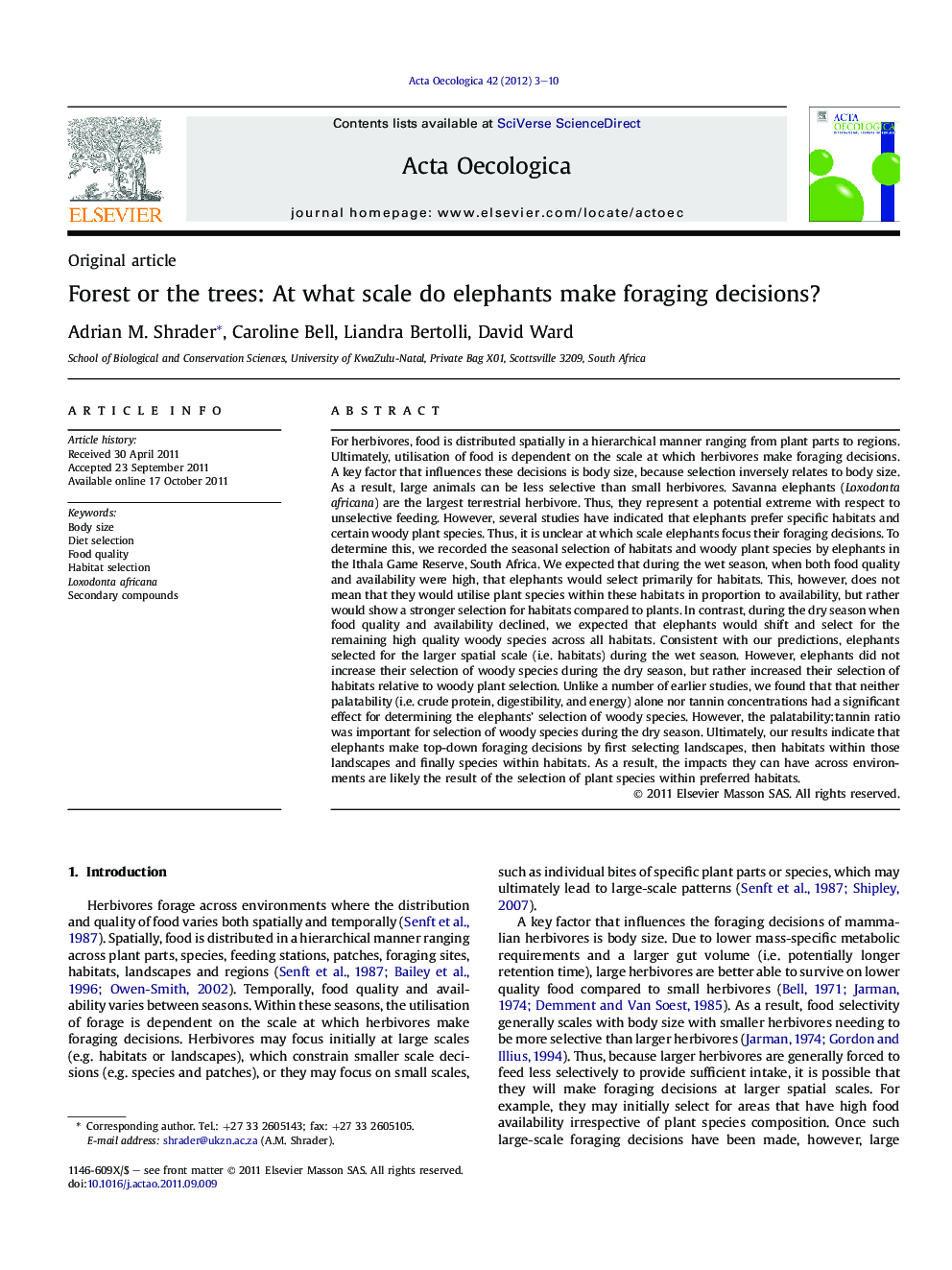| Article ID | Journal | Published Year | Pages | File Type |
|---|---|---|---|---|
| 4381301 | Acta Oecologica | 2012 | 8 Pages |
For herbivores, food is distributed spatially in a hierarchical manner ranging from plant parts to regions. Ultimately, utilisation of food is dependent on the scale at which herbivores make foraging decisions. A key factor that influences these decisions is body size, because selection inversely relates to body size. As a result, large animals can be less selective than small herbivores. Savanna elephants (Loxodonta africana) are the largest terrestrial herbivore. Thus, they represent a potential extreme with respect to unselective feeding. However, several studies have indicated that elephants prefer specific habitats and certain woody plant species. Thus, it is unclear at which scale elephants focus their foraging decisions. To determine this, we recorded the seasonal selection of habitats and woody plant species by elephants in the Ithala Game Reserve, South Africa. We expected that during the wet season, when both food quality and availability were high, that elephants would select primarily for habitats. This, however, does not mean that they would utilise plant species within these habitats in proportion to availability, but rather would show a stronger selection for habitats compared to plants. In contrast, during the dry season when food quality and availability declined, we expected that elephants would shift and select for the remaining high quality woody species across all habitats. Consistent with our predictions, elephants selected for the larger spatial scale (i.e. habitats) during the wet season. However, elephants did not increase their selection of woody species during the dry season, but rather increased their selection of habitats relative to woody plant selection. Unlike a number of earlier studies, we found that that neither palatability (i.e. crude protein, digestibility, and energy) alone nor tannin concentrations had a significant effect for determining the elephants’ selection of woody species. However, the palatability:tannin ratio was important for selection of woody species during the dry season. Ultimately, our results indicate that elephants make top-down foraging decisions by first selecting landscapes, then habitats within those landscapes and finally species within habitats. As a result, the impacts they can have across environments are likely the result of the selection of plant species within preferred habitats.
► As expected, elephants selected for landscapes and habitats during the wet season. ► Contrary to expectations, elephants did not select for woody plant species during the dry season. ► Neither palatability nor tannin concentrations determined selection of woody plant species. ► However, in the dry season elephants used palatability:tannin ratios to select woody species. ► Elephants make top-down foraging decisions selecting landscapes, habitats and finally species.
